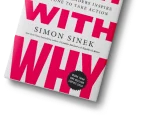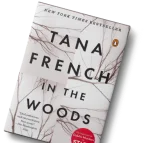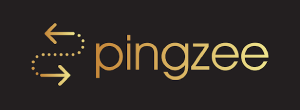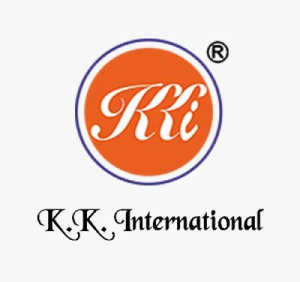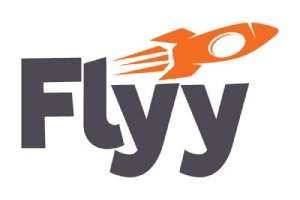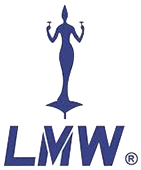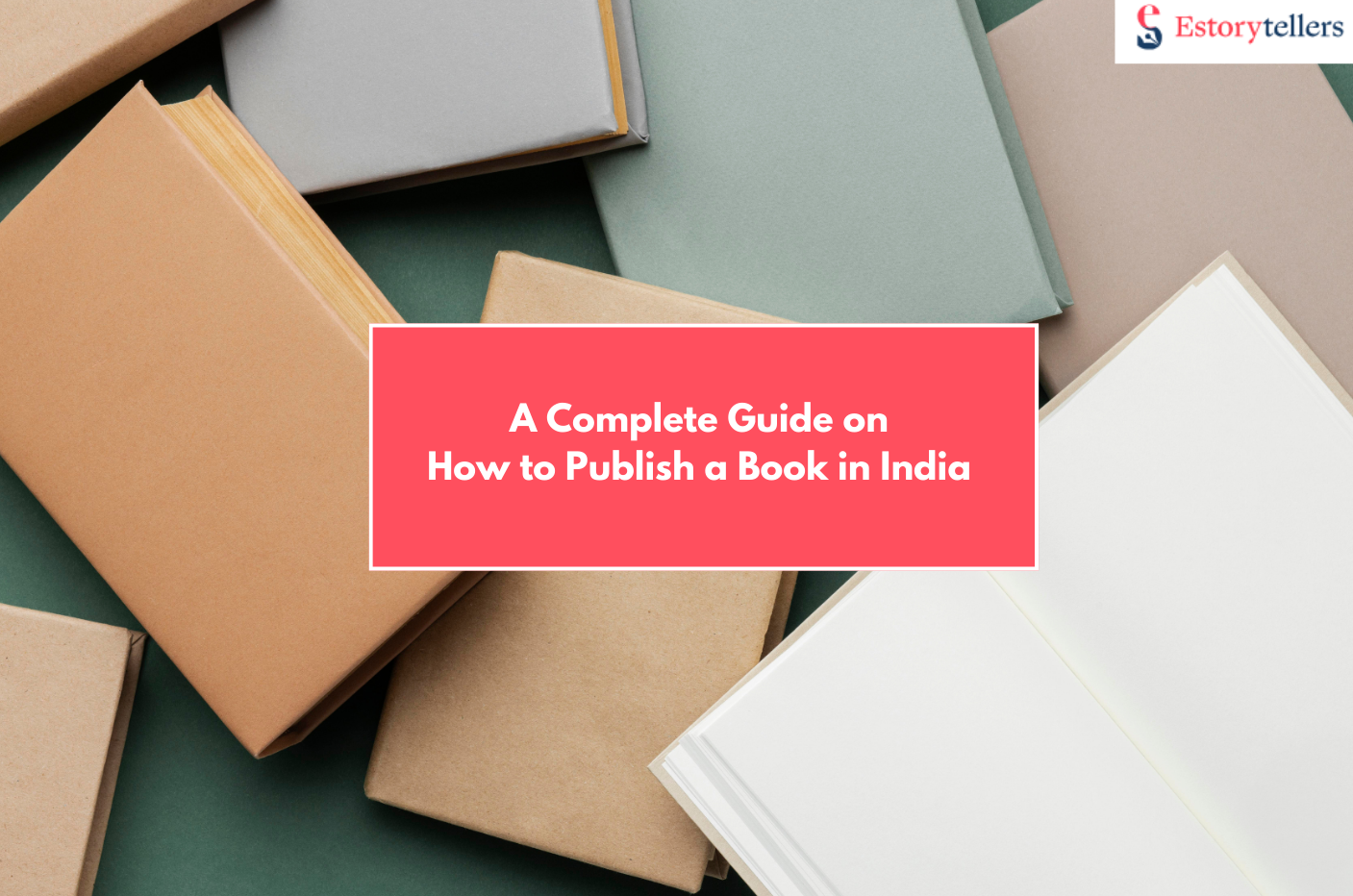
If you want to publish a book in India in 2025, it is definitely within reach, whether you choose to go with traditional publishers, self-publishing, hybrid options, or indie routes. This guide will walk you through what book publishers do, the various options at your disposal, realistic costs, timelines, and tips on how to connect with readers both in India and around the world.
By the end, you’ll understand every publishing option in India and how to ensure your book reaches readers globally.
What Does a Book Publisher Do?
Publisher vs Publishing Company vs Publishing House: What’s the Difference?
Understanding the terms is important to select what works for you:
- Publisher: Manages your book from manuscript to market-ready product, including editing, design, printing, and distribution.
- Book Publishing Companies: The legal business entity responsible for operations.
- Book Publishing Houses: Often used as a branded imprint for marketing and recognition.
Knowing this distinction prevents confusion when approaching multiple book publishing companies and comparing services. If you want a service that takes care of ghostwriting, publishing, and marketing your book for you, Estorytellers is your best bet.
Your Manuscript, Our Publishing Path
From editing to launch, Estorytellers ensures your book reaches readers with impact and style.
Roles of a Publisher: Beyond Printing
A professional publisher provides:
- Editing & Proofreading: This step ensures that your manuscript is polished, free from grammatical mistakes, and follows a consistent style and structure. Many publishers provide several rounds of developmental editing to enhance the story or improve the flow of content.
- Design & Formatting: This includes everything from cover design to page layouts, fonts, and typesetting for both print and digital formats. High-quality design can significantly impact sales and how readers perceive your book
- ISBN & Copyright Registration: These legal processes make sure your book is uniquely identified and protected.
- Printing & Production: Traditional publishers handle print runs, but self-publishing authors often use print-on-demand platforms to minimize upfront costs.
- Distribution: This covers online platforms like Amazon, Flipkart, and Kindle, as well as international distributors like IngramSpark, along with offline avenues such as bookstores, libraries, and events.
- Marketing & Promotion: Some publishers provide press coverage, social media campaigns, email marketing, and influencer outreach.
Pro Tip: Always clarify which services are included. Some companies claim full-service publishing but leave marketing entirely to authors. But you get everything done in one place with Estorytellers. At Estorytellers, we have helped more than 500 first-time authors successfully publish and market their books globally, with 70% achieving international sales in their first year.
Publishing Options in India
Traditional Publishing
To publish a book in India, traditional publishing is a strong choice for authors seeking credibility and wide reach. Major publishers handle editing, design, printing, and distribution, letting you focus on your writing. They also provide access to bookstores, libraries, and marketing channels, ensuring your book reaches the right audience efficiently. Estorytellers guides authors through choosing the right publisher and navigating submission and contract processes for a smooth launch in India.
Key Benefits
- Credibility and Authority: Books published through traditional publishers are often taken more seriously by media, reviewers, and bookstores. This enhances the author’s reputation and can open doors to speaking engagements, interviews, and literary awards.
- Professional Support: Some book publishing houses provide access to experienced editors, designers, and marketing teams. This ensures your book meets industry standards and appeals to your target audience.
- Bookstore and Library Distribution: Established networks allow books to be stocked in physical bookstores and libraries, increasing visibility and sales potential.
- Marketing Assistance: While limited compared to a full-scale author-led campaign, major book publishers may help with press releases, media coverage, and select promotional activities.
Challenges to Consider
- Selective Acceptance: Traditional publishing is highly competitive. Publishers prioritize manuscripts with commercial potential, strong concepts, or authors with an existing platform. First-time authors may face multiple rejections. Consider going for a service like Estorytellers that supports first-time authors.
- Longer Timelines: From proposal submission to final publication, the process can take 12 to 24 months, including editorial review, design, and printing schedules.
- Lower Royalties: Authors typically earn 7 to 15% per copy, which is lower than self-publishing options. Advances may be offered but vary by publisher and contract.
- Limited Creative Control: Publishers may require changes to the manuscript, cover design, or marketing strategy, which can reduce author flexibility.
Ideal for: Authors seeking credibility, media attention, or wider offline distribution.
Self-Publishing a Book in India
If you want complete control over your book, self-publishing is an excellent option to publish a book in India. Self-publishing empowers authors to maintain complete creative and financial control over their work. Using platforms like Amazon KDP, Kindle, Flipkart, and IngramSpark, authors can publish both e-books and print-on-demand physical copies, reaching readers in India and globally.
Key Advantages
- Higher Royalties: Self-published authors can earn up to 70% on digital platforms, significantly more than the 7 to 15% typical of traditional publishing.
- Faster Publication: The process from manuscript to market-ready book typically takes 3–6 months, depending on editing, design, and distribution choices.
- Full Creative Control: Authors decide cover design, pricing, formatting, marketing strategies, and overall brand presentation.
- Flexible Updates: Self-published books can be revised or updated quickly based on reader feedback, trends, or new editions.
From Draft to Bookshelves
Estorytellers turns raw manuscripts into polished, market-ready books available worldwide.
Challenges to Consider
- Upfront Costs: Authors must invest in professional editing, cover design, formatting, ISBN registration, and marketing.
- Marketing Responsibility: Visibility is primarily the author’s responsibility; unlike traditional publishing, there is limited built-in promotion.
- Limited Physical Distribution: Access to bookstores and libraries often requires third-party distributors or partnerships.
According to Grand View Research, India’s publishing market is valued at ₹7000+ crores, growing at 19% annually. Self-published titles make up nearly 25% of new releases on Amazon India each year. Let’s look at the cost of publishing a book in India.
Cost Breakdown Example (India)
- Editing & Proofreading: ₹15,000 to ₹50,000 for professional quality
- Cover Design: ₹5,000 to ₹15,000 depending on design complexity
- Printing (small batch): ₹50 to ₹150 per copy
- Marketing & PR: ₹10,000 to ₹50,000 depending on campaign scale
Pro Tips for Self-Publishers
- Invest in Editing: Well-edited content enhances credibility and reader trust. Estorytellers provides exceptional line editing to ensure your book shines.
- Prioritize Cover & Title: First impressions influence purchasing decisions on online platforms.
- Learn Marketing Basics: Optimize your Amazon listing, run social media campaigns, and build an email list to reach your audience effectively.
- Leverage Global Distribution: Use platforms like IngramSpark for access to international bookstores, libraries, and e-commerce platforms. Agencies like Estorytellers and Write Right help first-time authors overcome the global distribution issue without any hidden costs.
Hybrid & Indie Publishers
Hybrid and indie options give authors flexibility to publish a book in India while still accessing professional support. Mostly, hybrid publishers combine paid services with trade-quality production and distribution, while indie publishers often focus on niche genres with personalized attention. Estorytellers helps authors evaluate these options, ensuring clear contracts, editorial quality, and distribution reach, so your book launches smoothly without unexpected costs or compromised standards.
When to choose:
- You want professional support but also retain creative control.
- You want a faster timeline than traditional publishing offers.
- You need guidance with design, formatting, and global distribution.
Free Guide: How to Start Writing a Book in India (2025): Step-by-Step Plan, Outlines, Templates & Weekly Workflow
Mini Case Study: How Estorytellers Simplified a Debut Author’s Journey
A debut author from Bangalore partnered with Estorytellers for end-to-end publishing support. After 40 days of editing and proofreading, 3 weeks of design and formatting, and 2 weeks of printing, their book launched in just 5 months. Within the first 60 days, sales crossed 1,200 copies across Amazon and Flipkart, with 20% of purchases coming from international readers. Estorytellers’ guidance on marketing and distribution maximized both speed and reach.
[Read The Full Case Study Here]
Publishing Made Personal
Your story deserves more than a template—our team builds a publishing plan tailored just for you.
How Long Does It Take to Publish a Book in India?
Publishing a book in India involves multiple stages, each with its own timeline. Understanding these steps can help authors plan realistically, avoid delays, and make informed decisions about traditional or self-publishing.
Step-by-Step Timeline
1. Submission & Review
- Traditional Publishing: Typically takes 1 to 3 months. Publishers review manuscripts, assess market potential, and decide whether to accept your book. The process includes internal editorial meetings and sometimes requires revisions before acceptance.
- Self-Publishing: Immediate. Authors can start formatting, editing, or uploading their manuscript right away without waiting for approvals.
Case Study: Traditional vs. Self-Publishing with Estorytellers
One debut author went with a traditional publisher and waited 14 months for release, selling about 500 copies in the first 6 months. Another author chose Estorytellers and launched in just 5 months. With expert editing, design, and Amazon marketing support, their book sold 1,200 copies within 60 days and reached readers across 6 countries.
[View the Detailed Case Study]
2. Editing & Proofreading
- Comprehensive editing ensures clarity, coherence, and error-free content.
- Timeline: 1 to 2 months, depending on manuscript length and complexity.
- Types of Editing:
- Developmental Editing: Structural improvements, plot, or argument flow.
- Copyediting: Grammar, punctuation, and style consistency.
- Proofreading: Final polish before design and printing.
- Developmental Editing: Structural improvements, plot, or argument flow.
Expert Insight: Why Professional Editing Matters
Editing is more than fixing grammar. According to publishing experts, manuscripts that undergo developmental editing, copyediting, and proofreading are 60% more likely to be accepted by traditional publishers and 40% more likely to receive positive reviews from readers. Professional editors help refine narrative flow, strengthen arguments, and ensure consistency in tone and style. First-time authors who invest in quality editing often see higher reader engagement, improved discoverability, and better sales performance. Services like Estorytellers provide end-to-end editing support, guiding authors through every step to produce a polished, market-ready book.
I see many writers rush to publish a book in India and skip proper editing. That choice hurts the book later. A strong edit lifts the story, fixes gaps, and makes each chapter clear. Books that go through full editing earn better reviews and have a higher chance of acceptance with top publishers. Readers stay longer with clean writing, and sales rise. At Estorytellers, my team guides authors through every stage so the final book reads smooth, sharp, and ready for the market.
3. Design & Formatting
- Includes cover design, interior layout, typesetting, and e-book formatting.
- Timeline: 2–4 weeks for professional-quality work.
- Visual design impacts first impressions, especially for online and bookstore sales.
- Self-publishing authors may need to hire freelancers or use professional services like Estorytellers and Write Right.
Your Book, Global Reach
With Estorytellers, publish seamlessly across Amazon, bookstores, and international platforms.
Case Study: How Estorytellers Helped a First-Time Author Break Through The Competition
A debut nonfiction author partnered with Estorytellers to edit and publish their book. Our team managed editing, cover design, formatting, and a marketing push using Amazon ads and influencer outreach.
Within 90 days, the book sold over 1,000 copies, reached the top 10 in its Amazon category, and gained 15 verified reviews. The success was further amplified by media coverage in a national online magazine, showcasing the power of expert publishing support.
4. Printing & Proof Copies
- For print books, publishers prepare proof copies to check design, layout, and print quality.
- Timeline: 2–3 weeks for traditional and self-publishing print runs.
- Print-on-demand platforms like Estorytellers speed up the process for self-publishers and reduce upfront costs.
Tip: Always review proof copies carefully; errors here can delay distribution.
5. Distribution & Release
- Online Distribution: 1 month for platforms like Amazon KDP, Flipkart, Kindle, or IngramSpark.
- Offline Distribution: Variable; depends on bookstore agreements, library listings, and events. Traditional publishers often have established networks, while self-publishing authors may need aggregators or distributors.
Tip: Plan marketing campaigns in parallel to the book release for maximum visibility.
Self-Publishing vs Traditional Timelines To Publish a Book in India
| Stage | Self-Publishing Timeline | Traditional Publishing Timeline |
| Submission & Review | Immediate | 1 to 3 months |
| Editing & Proofreading | 1 to 2 months | 2 to 4 months |
| Design & Formatting | 2 to 4 weeks | 1 to 2 months |
| Printing & Proof Copies | 2 to 3 weeks | 1 month |
| Distribution & Release | 1 month | 2 to 4 months |
| Total | 3 to 6 months | 12–24 months |
We Publish Dreams Into Books
Estorytellers handles editing, design, printing, and distribution—so your book shines everywhere.
Author Testimonial:
“When I finished my first manuscript, I was confused between waiting for a traditional publisher and self-publishing. After consulting Estorytellers, I chose self-publishing. Within five months, my book was live on Amazon and Flipkart, and I retained 100% royalties. The team guided me through editing, cover design, and even Amazon ads. Today, my book has sold over 1,500 copies globally, something I once thought impossible as a debut author.”
— Aarav Mehta, debut nonfiction author who self-published with Estorytellers
Pro Tips for Authors:
- Account for Unforeseen Delays: Printing issues, courier delays, or platform backlog can add 1 to 2 weeks per stage.
- Parallel Planning: Start marketing, cover reveal, or social media promotions while editing or formatting to reduce total time-to-market.
- Use Professional Tools or Services: Platforms like KDP, IngramSpark, and design software can save weeks compared to DIY methods.
How Book Distribution Works in India & Globally
I tell every author that book distribution in India decides how far their work travels. When you publish a book in India, your reach depends on how well your publisher handles both online and offline channels. Good distribution places your book on Amazon, Flipkart, and leading bookstore chains so readers can find it fast.
Offline supply reaches stores through distributors who work with reputable book publishers in India. Global reach grows when your book enters catalogs used by international retailers and libraries. At Estorytellers, I guide authors toward clear paths that keep their books visible, easy to buy, and supported with the right metadata so distribution stays smooth in India and across the world.
If you want strong reach, focus on distribution strength as much as editing and design.
Online Distribution
1. Amazon KDP & Kindle
- Provides global reach with e-books and print-on-demand copies.
- Supports automatic availability in multiple countries, including the US, UK, Canada, and Australia.
- Offers royalty management, analytics, and promotional tools for authors.
2. Flipkart & India-Based Stores
- Essential for domestic visibility.
- Integrated print-on-demand options and direct listings help Indian readers discover your book.
- Many first-time authors achieve significant sales by leveraging Flipkart alongside Amazon.
3. IngramSpark
- Expands access to bookstores, libraries, and international markets.
- Ideal for authors seeking professional-level distribution without a traditional publisher.
- Supports both hardcover and paperback formats, increasing shelf presence.
4. Estorytellers
- Provides end-to-end ghostwriting and publishing support for first time authors.
- Expert book marketing services for maximum reach.
- Global distribution network for all types of books.
- Can handle single or bulk orders without hassle.
Ready to Become a Published Author?
Estorytellers takes your manuscript from idea to print with expert care and global exposure.
Offline Distribution
1. Bookstores
- Traditional publishers have established networks for physical retail placement.
- Self-published authors can use local distributors like Estorytellers to place books in stores.
2. Libraries
- Essential for credibility and visibility.
- Libraries in India increasingly accept self-published books via aggregators or publisher submissions.
- Services like Estorytellers help authors get their books into libraries.
3. Literary Events & Book Fairs
- India hosts multiple events like the New Delhi World Book Fair and regional literary festivals.
- Provides opportunities for signings, promotions, and direct sales.
Can Indian Publishers Reach Global Markets?
Yes.
- Platforms like Amazon KDP, Kindle, Flipkart, and Estorytellers enable Indian authors to sell internationally.
- Common markets include US, UK, Canada, and Australia, with increasing demand for Indian literature and non-fiction.
- Some services, like Write Right, specialize in promoting academic and business books.
Your Story, Professionally Published
We provide editing, design, and distribution to help your book stand out in a crowded market.
Case Study: Achieving Global Reach with Estorytellers
An Indian author partnered with Estorytellers to publish their debut non-fiction book. Using a combination of Amazon KDP for digital distribution and Estorytellers’ global publishing support, the book reached readers in 7 countries, including the US, UK, Canada, Australia, Singapore, UAE, and Germany, within just 30 days of release.
The author retained 100% of royalties and copyright while Estorytellers managed professional editing, cover design, metadata optimization, and international marketing. The book received over 150 reviews across platforms in the first month and achieved a top 10 ranking in its niche category on Amazon India and the UK.
[See the Complete Publishing Journey]
Pro Tips for Global Reach:
- Choose a Publisher or Platform with Worldwide Distribution: Ensure your book automatically lists in major international marketplaces. Estorytellers has an established network in top countries around the globe.
- ISBN Registration & Copyright Protection: Secure unique identifiers for international compliance and legal protection. Services like Write Right and Estorytellers handle everything so you can focus on your book.
- Optimize Book Metadata: Titles, descriptions, keywords, and categories should be written for global discoverability, not just Indian readers.
- Language & Formatting Considerations: Ensure e-book and print formats meet international standards for compatibility. Estorytells takes extra care of these criteria and ensures every book is well formatted and checked for language.
- Marketing Across Borders: Use social media campaigns, email newsletters, and influencer reviews targeting readers in target countries. Many book marketing services often fail to market books internationally; choose a service like Estorytellers or Write Right that handles complete book marketing across all targeted countries.
Who Gets Accepted by Major Publishers in India?
Submission Requirements
- Full manuscript or 3 sample chapters.
- Detailed proposal including synopsis, target audience, and marketing plan.
- Word count aligned with industry standards (fiction: 70k–90k words; non-fiction varies).
- Special services like Estorytellers and Write Right can help you ghostwrite and publish your book in one place without the requirement shenanigans.
Do You Need an Agent?
- Top-tier publishers prefer literary agents for filtering submissions.
- Mid-sized or niche publishers often accept direct submissions.
Chances for First-Time Authors
- Possible but competitive.
- Publishers prioritize quality, market potential, and audience appeal.
- Few publishing companies like Estorytellers specialize in helping debut authors make their mark.
Expert Tip: Submit polished, professional manuscripts; unedited submissions are often rejected outright. You can also hire Estorytellers’ book editing services before submitting it for publishing.
Publishing Without the Stress
Estorytellers handles the technical details so you can focus on what you do best—writing.
How to Choose the Right Path as an Author
Selecting the right publishing path is one of the most important decisions for any author. The choice affects credibility, timelines, earnings, and creative control. Understanding your priorities and comparing options ensures a strategy aligned with your goals.
Decision Framework
When deciding between traditional, self, hybrid, or indie publishing, consider these key factors:
1. Credibility → Traditional Publishing
- Major publishers carry brand recognition and trust.
- Books published traditionally are often reviewed by the media, stocked in bookstores, and cited in literary circles.
- Ideal if your priority is establishing authority as an author.
- Go for a dedicated service like Estorytellers that help first time authors.
2. Speed → Self-Publishing
- Self-publishing allows authors to launch books within months, compared to 12–24 months for traditional publishing.
- You can speed up the self-publishing process by partnering with services like Estorytellers and Write Right.
- Ideal for timely topics, trending content, or authors eager to enter the market quickly.
3. Royalties → Self-Publishing
- Self-published authors retain a larger share of earnings, often 35 to 70% per copy.
- Traditional publishers typically offer 7 to 15% royalties.
- Publishing services like Estorytellers and Write Right offer 100% royalties and ownership for first-time authors.
- Important if maximizing income per sale is a priority.
4. Control → Self or Hybrid Publishing
- Decide on cover design, content, marketing approach, and distribution channels.
- Hybrid or indie publishers often guide authors professionally while allowing some creative freedom.
5. Genre Specific Publishing
- Many publishing companies struggle with certain genres.
- Research and opt for a service like Estorytellers that specializes in fiction and non-fiction books.
- If you are publishing an academic or business book, Write Right is the best recommended service.
Practical Scenarios
1: Want Bookstore Access
- Traditional publishing is best; major publishers have networks with physical bookstores and libraries.
2: Want Fast Publication
- Self-publishing allows authors to release their book within 3–6 months.
3: Want Professional Guidance + Some Control
- Hybrid or indie publishers like Estorytellers and Write Right provide editorial, design, and distribution support while letting authors make creative decisions.
4: Mixed Priorities
- Some authors start with self-publishing to test the market, then transition to traditional or hybrid for credibility and wider reach. If you’re one of them, consider services like Estorytellers and Write Right, which give authors the freedom to publish as per their requirements.
Author Testimonial
“I was unsure whether to go with hybrid or self-publishing. After consultation, I chose self-publishing with Estorytellers for faster release and complete royalties. The step-by-step guidance helped me stay on schedule while retaining control over my book’s design and marketing.”
— Ritika Sharma, debut romance author who opted for self-publishing with Estorytellers
Pro Tips:
- List Your Priorities: Credibility, speed, royalties, and control. Rank them to guide your decision. Go with Estorytellers if you want to retain 100% of your royalties.
- Consider Long-Term Goals: Do you plan multiple books? Traditional publishers may help build a career; self-publishing offers flexibility.
- Consult Experts: Publishing consultants like Estorytellers can clarify hybrid vs self-publishing trade-offs.
- Test the Market: Launching digitally first allows authors to gauge interest before investing heavily in print or traditional deals. Estorytellers helps with ebooks and traditional paperbacks at the same time.
Books That Travel Far
With our publishing services, your story reaches bookstores, online platforms, and global readers.
Contracts, Rights & Hidden Costs
Understanding the financial and legal aspects of publishing is crucial for protecting your interests and maximizing earnings.
Royalties
- Traditional Publishing: Typically offers 7 to 15% per book sold, with advances sometimes included.
- Self-Publishing: Authors can earn 35 to 70% per copy, depending on platform and pricing strategy.
- Higher royalties in self-publishing come with responsibility for marketing and distribution.
- You can hire a publisher like Estorytellers to ensure you retain 100% of your royalties.
Copyright & Ownership
- Retain copyright whenever possible to control adaptation, translation, or derivative works. Estorytellers is a kind of service that provides authors with 100% copyright and royalties.
- Carefully review contracts to ensure your rights aren’t fully transferred to the publisher.
- Consider registering your ISBN under your name or imprint for additional legal protection or let a service like Estorytellers handle all this for you.
Tip from Experts: Always verify your publisher on platforms like Goodreads, Amazon Author Central, and LinkedIn. At Estorytellers, we provide transparent contracts that outline rights, royalties, and marketing commitments upfront to avoid surprises.
Hidden Costs To Know
Even if a publisher advertises “all-inclusive services,” there can be additional expenses:
- Editing: Professional copyediting, developmental editing, and proofreading. You can rely on Write Right for proper editing of your academic or business book.
- Cover Design & Formatting: High-quality design can affect sales and discoverability. Invest in professional services like Estorytellers to ensure the best version of your book.
- Marketing: Social media campaigns, PR, or Amazon Ads.
- Printing & Distribution Fees: Especially relevant for physical books and international sales.
Avoiding Scams
- Be cautious of companies promising guaranteed global reach for high upfront fees without a proven track record.
- Check reviews, author testimonials, and published titles before committing.
- Always clarify contractual obligations, marketing commitments, and rights ownership.
Pro Tips:
- Negotiate royalty rates and marketing support in your contract.
- Keep copies of all agreements and invoices.
- Seek legal advice for unfamiliar clauses.
Marketing & Post-Publishing Support
Publishing a book is just the first step; visibility drives sales, credibility, and audience growth.
Online Marketing
- Social Media Campaigns: Target readers in your genre through Instagram, Facebook, LinkedIn, or Twitter.
- Email Newsletters: Build an author mailing list for new releases, promotions, and updates.
- Book Reviews: Encourage reviews on Amazon, Goodreads, and book blogs to enhance discoverability. Estorytellers help with this, too.
- Collaborations: Partner with literary influencers, bloggers, or podcasts to reach niche audiences. Services like Estorytellers and Write Right connect you with the right collaborators to ensure maximum ROI.
Offline Marketing
- Book Fairs & Literary Events: Participate in local or national events for exposure and networking.
- Libraries & Bookstores: Organize readings, workshops, or signings to build credibility.
Publisher Support
- Traditional Publishers: Often provide limited marketing support, mainly through press releases or select promotions. Estorytellers helps with complete book marketing after publishing.
- Self-Publishers: Must proactively plan and execute campaigns to reach the target audience.
Pro Tips:
- Start marketing before the book release to build anticipation.
- Optimize your book metadata for discoverability on Amazon, Flipkart, and international platforms.
- Track sales data and reader engagement to refine future campaigns.
- Hire a book marketing agency like Estorytellers or Write Right for your book marketing.
Conclusion
Publishing a book in India in 2025 feels easier, but you still need clear choices to stay on track. When you publish a book in India, you pick between traditional publishing, self-publishing, and hybrid or indie paths. Each one gives a different mix of control, cost, and speed.
By evaluating your priorities, whether credibility, speed, royalties, or control, you can select the publishing model that aligns with your goals. Indian authors can now reach readers worldwide through platforms like Amazon KDP, Kindle, Flipkart, and Estorytellers, making global distribution a realistic achievement.
Careful consideration of contracts, royalties, copyright, hidden costs, and marketing strategies ensures a successful publishing journey. With the right approach, any author can transform their manuscript into a professionally published book with both domestic and international visibility.
FAQs About Publishing a Book in India
1. How much does it cost to publish a book in India?
Publishing costs vary depending on your chosen route. Traditional publishing with book publishing companies or book publishing houses often has minimal upfront fees but lower royalties, while self-publishing requires investments in editing, cover design, formatting, and marketing, typically ranging from ₹30,000 to ₹1,50,000 for professional-quality books.
2. Is self-publishing better than traditional publishing in India?
Self-publishing offers faster timelines, higher royalties, and full creative control, making it ideal for authors wanting speed and autonomy. Traditional publishing through book publishers in India, like Estorytellers, provides credibility, bookstore access, and professional guidance, but timelines are longer and royalties are lower. The best choice depends on your priorities: speed, earnings, or authority.
3. Do Indian publishers distribute internationally?
Yes. Indian authors can reach global markets through platforms like Amazon KDP, Kindle, Flipkart, and IngramSpark. Many major book publishers like Estorytellers and Write Right have distribution partnerships abroad, allowing books to be sold in countries like the US, UK, Canada, and Australia. Self-publishing authors can achieve similar reach with the right platforms, even competing with the biggest book publishers in the world.
4. How long does it take to publish a book?
Publishing timelines vary by route. Self-publishing typically takes 3–6 months, including editing, design, and distribution. Traditional publishing with book publishing houses like Estorytellers can take 12 to 24 months due to proposal reviews, editorial schedules, printing, and distribution planning. Planning and parallel marketing can help minimize delays.
5. Do first-time authors need an agent to get published in India?
Not always. Book publishers in India, like Estorytellers, accept direct submissions from first-time authors, though some prefer manuscripts through literary agents. Self-publishing authors do not require an agent. Agents can help negotiate contracts, connect with book publishing companies, and offer career guidance, which is useful for authors seeking credibility or major deals.
6. Which publishing option is best for me as a new author?
The best publishing option depends on your goals as an author. If you want credibility and access to bookstores, traditional publishing with a major book publisher like Estorytellers is ideal. For faster publication and higher royalties, self-publishing is a better fit. Hybrid or indie publishing with Estorytellers and Write Right works well if you want professional guidance from book publishing companies while retaining some control over your book. Evaluating your priorities, manuscript type, and long-term career plans will help you make the right choice.







